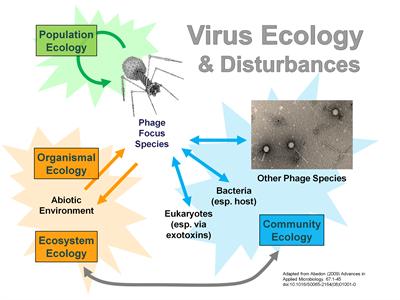A virus is an incredibly tiny infectious organism that reproduces only within the living cells of a living organism. This includes the human body. Viruses attack all sorts of life forms, from plants and animals to microorganisms, such as bacteria and archaeans.
A virus can multiply rapidly and spread from person to person through contact, and the most common way for a virus to do this is through direct contact with an infected person's body fluids. The virus travels along the nerve cells in the body. In some cases it travels along the blood stream. If the virus is not in contact with the body fluids directly, it can spread by entering the bloodstream through a cut or break in the skin.
Viruses are classified according to their pathogenicity, or how easily they cause disease. The classification can be quite complex, but virus pathogens include more than a dozen types. The pathogens classified as "anthrax", for example, have not yet been discovered. The pathogen known as "St. Louis E. coli" has killed several people through its ability to cause serious illness.
The virus may enter the human body either by touching an infected object or by having contact with the bodily fluids of an infected person. While the virus cannot be seen without magnification, the immune system will react to the virus as it enters the body and causes infection, and if it is identified, treatment is available.
Viruses are categorized according to where they live. They can live in both the intestinal and the respiratory tracts, but only in animals and in very rare cases, both the gastrointestinal tract and the respiratory tract. Viruses are also able to survive in some foods and some people have developed immunity to the virus.
The different viruses cause different diseases.
They are classified into two groups: human viruses and animal viruses

Human viruses are the most common because they are very common. Most often, people are affected by colds, chickenpox, measles and even typhoid fever. Most diseases are caused by a virus, although other viruses can cause the same symptoms. The most common human virus is influenza. the SARS virus, which can cause a wide range of medical complications, including SARS fever.
Most diseases that people suffer from can be prevented by avoiding being near the disease and taking precautions when exposed to the virus. For example, it is important for healthcare providers to use gloves when handling infected patients. Even hospital staff must wear masks and goggles whenever they come into contact with patient body fluids.
Animals are infected with many viruses. The two most common types are avian viruses and viruses. In addition, a number of other viruses can exist in the environment. Most of these viruses are not as deadly as human viruses. The viruses that infect animals and are the most lethal to animals are the herpes virus, rabies virus and SARS.
The virus that causes SARS in humans is common in dog food. However, it can also infect people who come into contact with infected dogs. This is a relatively new virus, and the reason SARS spreads so quickly is because very few people know what it is and how to prevent it from spreading.
While many people think that the best way to prevent viral infections is not to get them, this is not always the case. A healthy immune system is a good defense against most viruses. The human body has developed a number of systems designed to combat different types of viruses, so it can be difficult to keep the virus from entering the bloodstream.
If you are exposed to the virus, your body will develop some type of natural immunity and this will help you fight the virus. Although some people are more susceptible than others, you can stop the virus before it reaches the blood stream.
